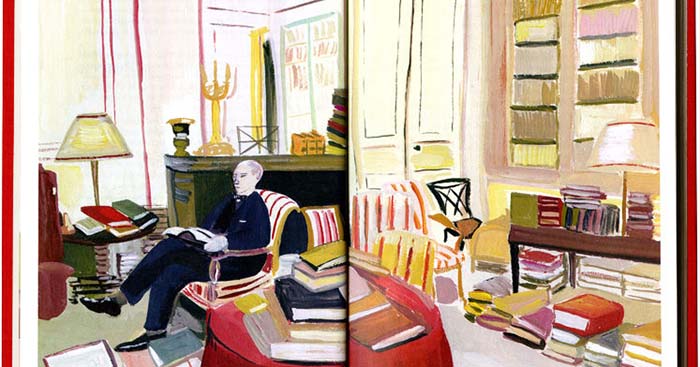In America, William Strunk Jr and EB White are to writing what the Duke of Windsor is to menswear: the undisputed arbiters of style. UK writers may favor HW Fowler for a guide to The King’s English. But all across the United States, every college freshman is being forced to read buy Strunk & White’s The Elements of Style.
A History of Style Guides
The Elements of Style began as short guidebook Professor Strunk handed out to his English students at the beginning of the semester. Its purpose was only to be a brief overview of basic writing tips. It contained a list of common mistakes he found in his students’ writing and tips on how to avoid those mistakes. You know, practical advice like rule 12: “Use definite, specific, concrete language”. Or rule 18: “Place the emphatic words of a sentence at the end”.
Since the Ancient world, teachers of rhetoric have compiled style guides to help their students write and speak effectively. In Ancient Greece, Aristotle said that “it is not enough to know what we ought to say; we must also say it as we ought” 1. And centuries later in Ancient Rome, Cicero listed Style as one of his Five Canons of Rhetoric.2 Cicero called Style “the adaptation of suitable words and sentences to the topics so conceived”. The goal of good style is clear and effective communication.
Contemporary linguists and lexicographers are resistant to any sort of prescriptivism. Many of them loath style manuals. But many professional and academic industries publish their own style guides in an effort to maintain constancy and clarity. And some style guides only exist to serve social functions—like the organization GLAAD which publishes its own style guide to help media outlets use inclusive language involving the queer community.
Maira Kalman’s Illustrated Edition
The Elements of Style has had many editions over the near century since it was written. William Strunk Jr published his original edition in 1920. Then EB White came along and revived interest in the book with his additions in 1959. And now Strunk & White is in its 4th edition with updated views on grammar and more gender inclusive language. Hooray!
But in 2005, Maira Kalman—illustrator for The New York Times and the New Yorker—decided she wanted to make an illustrated edition.3
“We were on Cape Cod, a place, obviously, of great inspiration, and I picked up this book, The Elements of Style, at a yard sale. And I didn’t — and I’d never used it in school.… But I picked it up and I started reading it and I thought, this book is amazing. I said, people should know about this book! So I decided it needed a few — it needed a lift, it needed a few illustrations.”4
Because if there was ever a book that desperately called for illustrations, it’s a writing style manual. To be fair, I never read the book in school either. But if I’d had this beautiful edition, I might have paid closer attention. Because as any design snob knows, you’re more likely to use your tools when you like looking at them.
And it is hard not to like looking at this book. It is quirky in an understated kind of way. But it’s also elegant in an unpretentious kind of way. The illustrations maintain the spirit of the rules of the book. And did you know it inspired an opera?5
The One Rule of Style: Have Fun with It
Certainly one could argue, ‘Who are these old white man to tell me how to use my own language?’ And that’s a fair argument. But sometimes an expert’s opinion can be helpful. Kalman described it like this:
“EB White wrote us a number of rules, which can either paralyze you and make you loathe him for the rest of time, or you can ignore them, which I do. Or you can, I don’t know what, you know, eat a sandwich.”
In his “Introductory” to the 1920 edition, William Strunk says that in his experience, “once past the essentials, students profit most by individual instruction based on the problems of their own work”. You see, he never intended The Elements of Style to be the alpha and omega of American English. He just wanted to give his students a good foundation and allow them to develop their own style from there.
Good writing does not require a writer to conform to arbitrary standards set by some random English teacher. Every writer brings their own experiences, their own voice and their own style to a piece of writing. But it does help to have a bit of advice along the way. Bruce Boyer, fashion writer and Columbia University professor says, “Real style is never a matter of right or wrong. It’s a matter of being yourself. On purpose.”6 And that’s beautiful.
And, you know, if you’re just not that into the book, you can skip it and watch the rap video. Or, I don’t know, eat a sandwich.
- Aristotle | Trans. W Rhys Roberts | Part 1 | Book III | Rhetoric | 350 BC
- Cicero, Marcus Tullius | De Inventione | 84 BC
- Kalman, Maira | The Elements of Style Illustrated | 2005
- Kalman, Maira | “The Illustrated Woman” | TED | Mar 2007
- “The Elements of Style (2005)” | Nico Muhly
- Boyer, G Bruce | Chapter 16: “Maxims” | True Style | 2015

